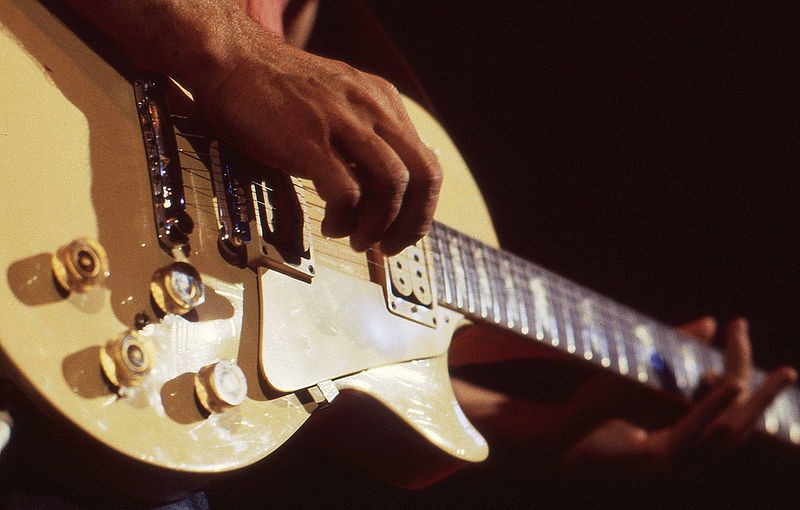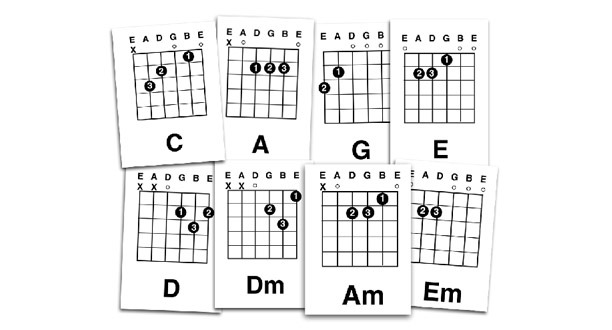When you start to play solos, picking speed becomes a massive issue. It’s largely because virtuoso guitarists like Yngwie Malmsteen and Paul Gilbert often play at electrifying speed, and many lead players aspire to reach the same level. The truth is that some pretty basic aspects of technique usually hold most players back from achieving the speed they’re looking for. There aren’t any quick and easy solutions – building your picking speed takes practice and dedication – but you can learn the techniques you need to maximize your potential.
Alternate Picking
If you aren’t already using alternate picking, you can double your picking speed with the simple technique. Using all down-strokes (or up-strokes) means that you move your hand in one direction to strike the string and then have to bring it all the way back to the starting position before you pluck it again. This is criminally inefficient, because you’re passing over the string on the way back without seizing the opportunity. Alternate picking means using both the down-stroke and the up-stroke to pluck the string. Practice by playing through a scale using alternate picking or simply pick each open string four times.
Economy Picking
Alternate picking is a lot simpler, but if you’re particularly astute you’ll have realized that there are flaws in the system. If you’re playing three notes on a string before moving to the next one down (like when you practice scales), alternate picking dictates that the third note will be a down-stroke and the first one on the new string should be an upstroke. You have to skip over the string you’re about to play in order to pick it as an up-stroke.
Economy picking removes this inconsistency, and you pick alternately unless you’re moving between strings, in which case it’s better to play both in one fluid motion. Sweep picking is often called a separate technique, but in reality it’s just an extreme case of economy picking. If you have to play one note on several consecutive strings, you would logically do it with one sweep of your picking hand. Practice a scale or play three notes per string using economy picking to get the hang of it. Sweep picking is actually a little trickier, because you have to co-ordinate your movement with your fretting hand to stop it from becoming a chord. That isn’t easy, so for now just stick to economy picking!
Relax
There is a tendency to seize up when you try to play fast. If you’re playing with a tense picking arm, you’re really damaging your speed. It might seem like you’re putting more effort in, but in reality it’s a detriment. When you try to play quickly, keep your arm motion fluid and relaxed. Remember, you’re only hitting a tiny string; it doesn’t take much force. Stay relaxed and focus on small, quick movements.
The Plectrum
You might also be causing a problem for yourself if you don’t use your pick correctly. If you strike the string with the flat side of the pick, you’re creating unnecessary resistance when you play. The string stretches and absorbs more of the energy you’re expending, which slows you down. Instead, you should tilt the pick diagonally, so the edge of it strikes the strings when you play. This reduces the resistance and helps your pick skip over the strings when you make contact. You don’t need very much contact to play a note. However, the more you tilt the pick, the less clearly the note will sound out. You need to find a comfortable mid-point between clear sound and low resistance.
You should also try to just use the pointed tip of the pick to strike the strings. To minimize the resistance you encounter when you make contact with the string, touch it with the smallest bit of the pick possible. A tiny touch is enough to make the note sound out (it does help if you’re playing electrically with distortion) so there’s no point in really twanging it. Again, this is a case of finding the right balance between minimal resistance and the clarity of the notes. You don’t need to use much of the pick, but if you use too little the individual notes will get lost in the fog. Do some experimentation to find your ideal balance between speed and the clarity of the notes.
Small Movements
When you’re picking multiple notes on the same string, you should make sure you’re not wasting arm motion on your stroke. You only need to move the pick across to the other side of the string to play a note; anything else just slows you down. It’s hard to completely avoid wasted motion, but you should do everything you can to reduce it. It really helps to anchor your picking hand in place, either by resting your palm on the bridge or your pinky on the body of the guitar. If your hand is stable, you have much greater control over your movements.
Working on Your Speed
Those techniques should help you see a dramatic increase in your picking speed, but there aren’t many more simple measures you can take. From this point onwards, you have to put in the time to practice.
- Get a metronome. These are little clicking boxes that help you stay in time. When you’re building speed, you can gradually increase the tempo on the metronome (in increments of 10 BPM) in order to play faster. You can play two, three or four notes per click, but just keep increasing the tempo whenever you’re ready to progress. Most players advise starting at 60 BPM. There are plenty of online metronomes or apps you can use for free.
- Start learning scales, solos and picking exercises. You can pick up new ones as you progress, but you should give each one plenty of time so you work out the best way to play it. Economy picking, for example, can take a while to get comfortable using.
- Don’t push yourself too hard. If you’re in pain, it’s your body’s way of telling you to relax for a while. There’s no point in really straining yourself; leave it until tomorrow and try again.
- Set yourself a goal. If there’s a solo you really want to be able to play but it seems inhumanly fast, make learning to play it your goal. Having something to work towards really helps you see your progression. When you feel like you’re ready, try to learn it. Then when you can’t play it yet, go back to the exercises and keep working on your speed! You’ll get there eventually.
Down Picking Endurance Exercises
Here are some down picking endurance exercises by Emil Werstler from JamPlay using a riff from “Ovum”, a song his own band Daath.












nice post